
Like a Dragon: Ishin! Review
Like a Dragon: Ishin! finally brings one of the two historical Like a Dragon (formerly known as Yakuza) spin-offs to the west — as a remake under a new engine while introducing some significant tweaks from its original 2014 release in Japan.
Before diving in, I want to provide a bit of context surrounding the original release of this game. It was the entry that was released right before Yakuza 0 in Japan, and that entry wouldn’t make its way westward until two years later in 2017. Like a Dragon: Ishin’s original release was a cross-generational title that launched for the PlayStation 3 and PlayStation 4. In some ways, several aspects of Like a Dragon: Ishin’s gameplay served as a prototype for Yakuza 0, though its core structure and flow are more reminiscent of Yakuza 3, 4, and 5. I personally played the original release of this game many years ago and enjoyed it a lot, so I was very excited to see this finally make it to the west.
This new remake of Like a Dragon: Ishin is a fascinating project that provides a substantial facelift through Unreal Engine 4, since the original version was developed on the engine that powered Yakuza 0 and Yakuza Kiwami. It also marks a departure from the Dragon Engine that newer RGG Studio releases use, including the recent Yakuza: Like a Dragon and Lost Judgment.
While Like a Dragon: Ishin’s remake is easily the definitive version of the game, the transition to Unreal Engine 4 hasn’t been the most graceful at times. Some of the new gameplay tweaks present some new minor flaws as well. Nevertheless, the vast improvements to its gameplay, visuals, and audio make Ishin a blast to play, and it remains one of the most fully-featured games in the entire Like a Dragon / Yakuza series.
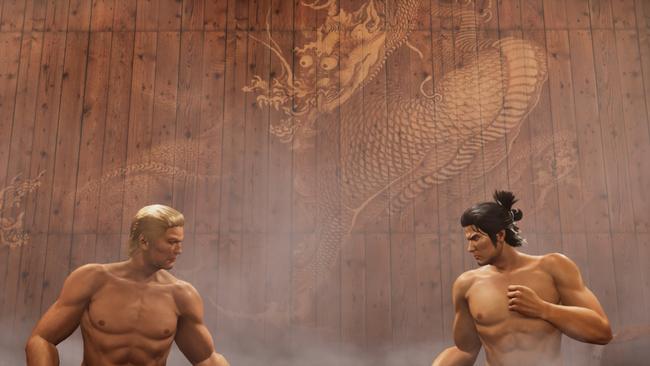
Like a Dragon: Ishin turns the clock back to the Bakumatsu period in Japan. Players see the world as Ryoma Sakamoto, a ronin that has made his way back to his hometown of Tosa. After a brief feud, Ryoma reunites with his adopted father, Toyo Yoshida, and his sworn brother, Hanpeita Takechi.
Several key narrative developments that occur after the opening chapter cause Ryoma to exile himself from Tosa. He relocates to Kyo sometime later and goes under a new alias, Hajime Saito. Ryoma eventually decides to infiltrate the Shinsengumi, an elite police squad working for the Bakufu (military government), to discover the identity of a certain masked man, and his only lead is that they are a part of the Shinsengumi.
It takes some time for Like a Dragon: Ishin to really get going. The first several hours introduce the historical period, the premise of the plot, and Ryoma’s battle styles. Players are met with early doses of talking to NPCs until a story marker appears to proceed. NPCs will often disrupt players along the main path, too, either introducing a substory or side activity. It’s nothing new from RGG Studio’s games, though it can feel a tad egregious in how often it happens at times in this entry.
Like a Dragon: Ishin takes its time before letting players explore on their own, and there are very few notably flashy events to keep things moving early on. A lot of Bakumatsu-era terminology is casually utilized in many exchanges between characters, which can be puzzling at times, so much so that the game even includes a glossary that is gradually populated to define and clarify these terms. This feature was also in the original 2014 version as well, for modern Japanese players. By default, terms that have a glossary entry are not color highlighted during dialogue interactions, though the text box will display the Glossary icon if the line does include a term defined by it. The Glossary icon shows up even if a player has encountered that same term before, so I’d recommend turning on the option that color highlights glossary terms if you don’t want to end up checking the same terms over and over again.
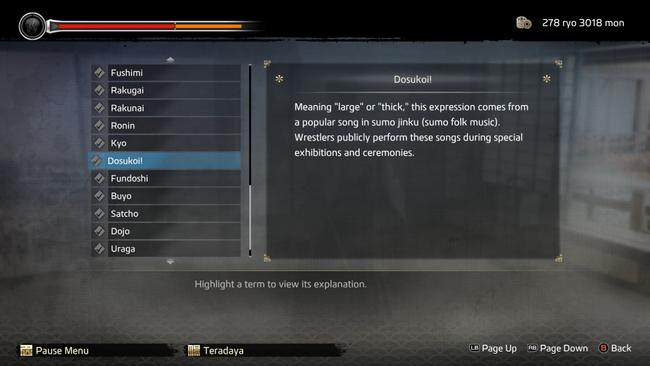
The localization of Like a Dragon: Ishin’s in-game glossary is particularly impressive because it’s able to concisely explain many borrowed terms that wouldn’t have elegantly fit into the English script had they opted to substitute a close English equivalent word instead. This aspect in particular was the primary component of the English localization that I was most curious about, because Ishin is set in such a colloquially dense time period. There are also several collectible Memoirs with numerous paragraphs all fully localized that further flesh out the Bakumatsu setting.
Once Like a Dragon: Ishin finally allows players to freely travel all of Kyo and its smaller connecting districts and regions, this is where the game starts to truly shine. Think of Kyo as the Kamurocho of Like a Dragon: Ishin; it is littered from head-to-toe with hours upon hours of optional substories and minigames.
Of course, several staples from previous Like a Dragon / Yakuza return such as fishing, gambling (poker, shogi, mahjong, etc.), karaoke, and the battle arena. There are several side activities that match the time period too, including betting on cock racing, wood chopping, buyo dancing, and helping out passing orders at an udon shop. Then as always, some that are simply bizarre; for instance, the batting cage substitute in Like a Dragon: Ishin is… swinging your katana at incoming cannonballs pitched to you.
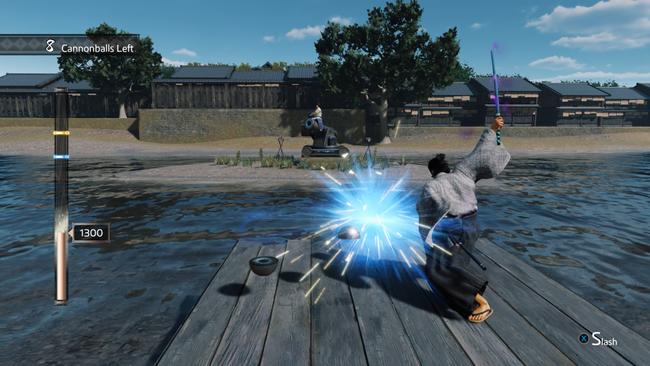
There are many other more involved activities - timed challenges taking out scarecrow machinations under certain restrictions, managing a farm to pay off a certain young girl’s debts, and the Battle Dungeon that contains many valuable materials to craft and upgrade equipment.
A plethora of substories inhabit the world of Like a Dragon: Ishin that all provide flavor to the social circumstances of the era. Some allow Ryoma to establish bonds with NPCs that require doing repeated tasks at set intervals to continue their storylines. The revamped menus in the Like a Dragon: Ishin remake help make sorting through the side activities and substories much easier. If players are worried about missing a substory, there is an equipment attribute that marks their locations on the map.
Like a Dragon: Ishin keeps track of progress through an in-game achievement tracker. Achieving specific milestones rewards Virtue, a currency that can be spent on shrines and a shop run by a priest. These can be spent on gameplay modifiers, such as a longer sprint time or additional inventory slots - along with new fishing rods, more types of crops to grow, and much, much more. It’s an additional, compelling incentive to dive into the myriad of optional content that had me hooked for hours.
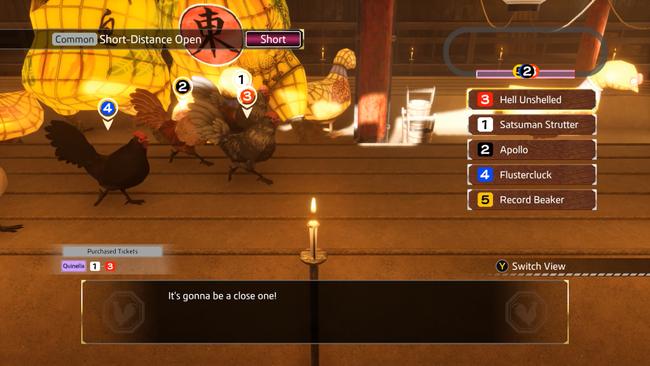
Players familiar with Yakuza 0, the Yakuza Kiwami remakes, or the Judgment games should feel right at home with Like a Dragon: Ishin’s combat system, because it is essentially the progenitor of switching between fighting styles that later games adapted from Like a Dragon: Ishin’s original release. Up until then, previous Yakuza games either stuck with one main fighting style to level up or spread different types of fighting stances throughout multiple characters. The other historical Like a Dragon spin-off game, Ryu ga Gotoku Kenzan!, was an exception since it experimented with different permanent weapon movesets, though it wasn’t quite like how contemporary Like a Dragon games handled it.
In Like a Dragon: Ishin, there are four fighting styles that players can switch between on-the-fly during combat - Brawler, Swordsman, Gunman, and Wild Dancer. Most of these are self-explanatory with Brawler being your standard unarmed “Yakuza” experience of punching, kicking, and grabbing environmental objects or enemies. Swordsman has Ryoma unsheathed his katana to display his mastery of the sword. Gunman, well, pulls out a gun instead of a sword and it never has to reload; special types of bullets can be loaded to give its secondary attack different properties. Wild Dancer allows players to wield both Ryoma’s katana and gun together which allows him to gracefully traverse around the battlefield to swiftly fire off attacks.
Additionally, the Brawler style allows Ryoma to equip additional weapons that can be learned from the skill trees of other styles; these include the odachi, spear, and a cannon.
Raising Ryoma’s character level gives him gray Training Orbs that can be applied to any style’s skill tree, but continually using a specific style will also reward players with color-coded Orbs that can only be used in that specific style’s skill tree too. Both types of skill orbs can be fed into the same skill trees; the only difference is that gray ones can be applied universally to any skill tree, while colored orbs are confined to the fighting style’s skill tree that they were earned from.
Heat Actions are a treat in this entry as well. Many Heat Actions are new and unique to Like a Dragon: Ishin because of Ryoma’s distinct arsenal and battle styles. They’re flashy, violent, and often downright brutal. A good chunk of them require QTEs to successfully pull off, but the Accessibility menu allows players to auto-complete all QTEs they come across.
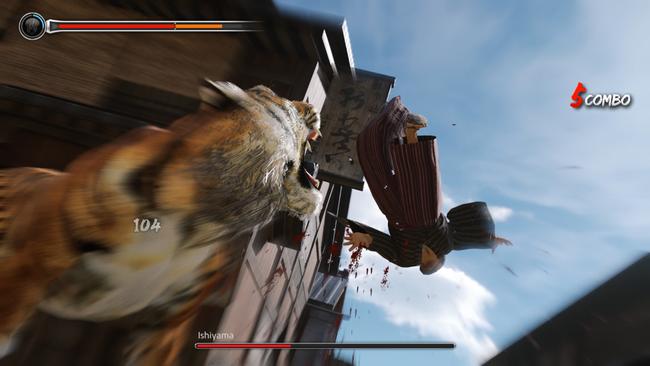
One of the major gameplay alterations in the Like a Dragon: Ishin remake is the universal nature of the Trooper Card system now.
Trooper Cards are special in-game collectible cards that provide Ryoma with stat buffs, over-the-top attack options, additional healing options, and such. In the original version of the game, these were confined to the Battle Dungeon mini-game, but now they’ve been expanded to function in the game as a whole. Many fun character cameos manifest in these cards for series fans. A total of 16 different cards can be equipped as each battle style is able to access up to 4 Trooper Cards at once.
The spectacle of the abilities of these cards is truly ridiculous - summoning a bear to maul enemies, a chain lightning that stuns multiple enemies, buffing Ryoma momentarily to deal thousands of damage, stopping time itself, and the list goes on. Those seeking a more grounded experience from Ishin can simply ignore Trooper Cards entirely by unequipping them; the Battle Dungeon remains the only piece of content that seems to truly warrant their use due to how stat scaling functions in later difficulties of it.
An unfortunate consequence of the Trooper Cards’ newfound universality is that some story bosses now possess these too. What I really loved about Like a Dragon: Ishin originally was the drama surrounding several of the heated samurai showdowns and the expressiveness of the numerous duels in the game. They weren’t over-the-top or wacky - simply the intense clash of steel from exchanged blows on top of fantastic music.
Now, the final phases for many story bosses have them fire off the occasional silly magical attack. Imagine going toe-to-toe in a fierce duel against one of the best samurai in the country and all of a sudden, they just start spewing out fireballs or lightning at the last stretch. Look, I understand the Like a Dragon / Yakuza series was never meant to be a realistic depiction of reality but I do feel a bit robbed of something that was originally excellently done. Unfortunately, there is no way to turn off bosses accessing over-the-top Trooper Card abilities in the remake, even if players unequip all Trooper Cards to disable it on their end.

As I briefly mentioned earlier, I wanted to also give a special mention to Like a Dragon: Ishin’s soundtrack. It is simply beautiful and a handful of tracks were newly rearranged for the remake because of another big change - the likenesses of several key side characters.
The historical spinoff Like a Dragon games have a fun approach to their presentation by modeling the visual appearance of their characters after those that are prominent in the mainline Like a Dragon / Yakuza games. The obvious ones that people will notice right away in Like a Dragon: Ishin are Ryoma Sakamoto as Kazuma Kiryu and Soji Okita as Goro Majima, of course. Those who are more invested in the series will also immediately recognize the characters portrayed by Shun Akiyama and Ryuji Goda. These in-universe cameos extend beyond appearance alone; they usually serve a loose narrative parallel to their counterparts too, which clues in attentive fans subtly.
Since Like a Dragon: Ishin was originally released before Yakuza 0, Yakuza 6: The Song of Life, and Yakuza: Like a Dragon, characters from the first five mainline Yakuza games only appeared in it - along with several Japanese actors that had no ties to the series.
Now, the remake for Like a Dragon: Ishin has replaced a handful of side characters with some of the most memorable likenesses from the later Yakuza games, including the three lieutenants from Yakuza 0, a few familiar faces from Yakuza: Like a Dragon, and a specific white-haired man that was introduced in Yakuza 6. Although I’ll miss some of the original likenesses, this is admittedly a smart move by RGG Studio to better connect with international audiences that will more likely recognize these likenesses from recent (and more popular) entries.
All of the replacements do a tremendous job of performing their own interpretation of the characters they’re representing. It remains cohesive and compelling, which brings me back to my original point - newly arranged music was introduced in this remake to retrofit several character themes under the aesthetic of Like a Dragon: Ishin. I was amazed when hearing these tracks for the first time; it was such a welcome surprise.

On the technical end, Like a Dragon: Ishin is much more visually vibrant than its original release. Colors pop out more and the lighting has substantially improved in its reconstruction under Unreal Engine 4; the outdoor lighting can be a bit too intense at times when indoors though.
I played the PC release of Like a Dragon: Ishin and it allows for an uncapped framerate beyond the 30, 60, and 120fps cap options. Regrettably, I did run into some stuttering issues during my playthrough when it had to load in new assets at times. This became the most annoying when seeing unique cinematics during fights for the first time - just tiny blips of stuttering during showdowns. There were also some instances of pop-in I noticed here and there, alongside minor instances of character models being hastily put into place for a scene real fast. There’s nothing game-breaking, but I figured it’s worth a mention that it isn’t the most flawless conversion to Unreal Engine 4.
Like a Dragon: Ishin is an excellent revitalization of an already solid entry in the Like a Dragon series. It has a compelling story that somewhat falls apart in the last stretch, but the journey that leads to it is captivating. Adding in new likenesses from recent Like a Dragon / Yakuza series from several iconic characters was a change I welcomed, because I loved so many of those characters. The gameplay feels refreshing thanks to Ryoma’s unique arsenal and there is just a sheer amount of optional side content to dive into that all feel fun, partially due to the Bakumatsu time period it’s set in. I ultimately finished my playthrough in 34 hours, but I still have a ton of optional content left that will easily consume dozens of more hours.